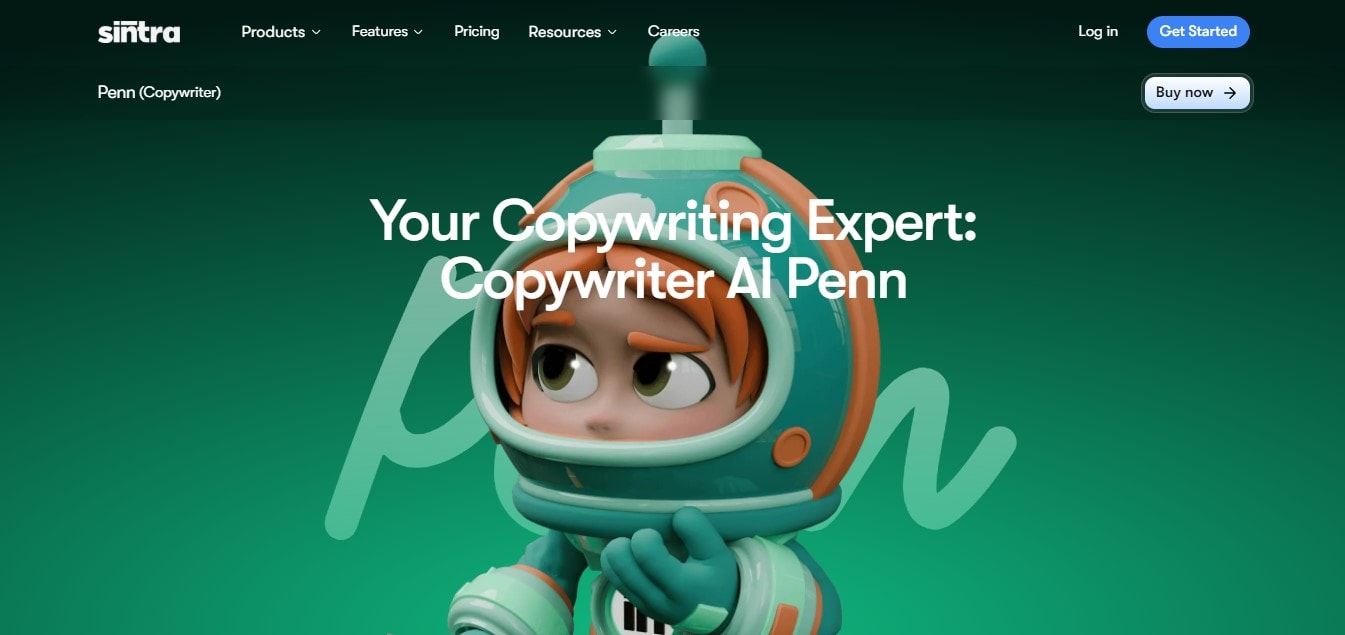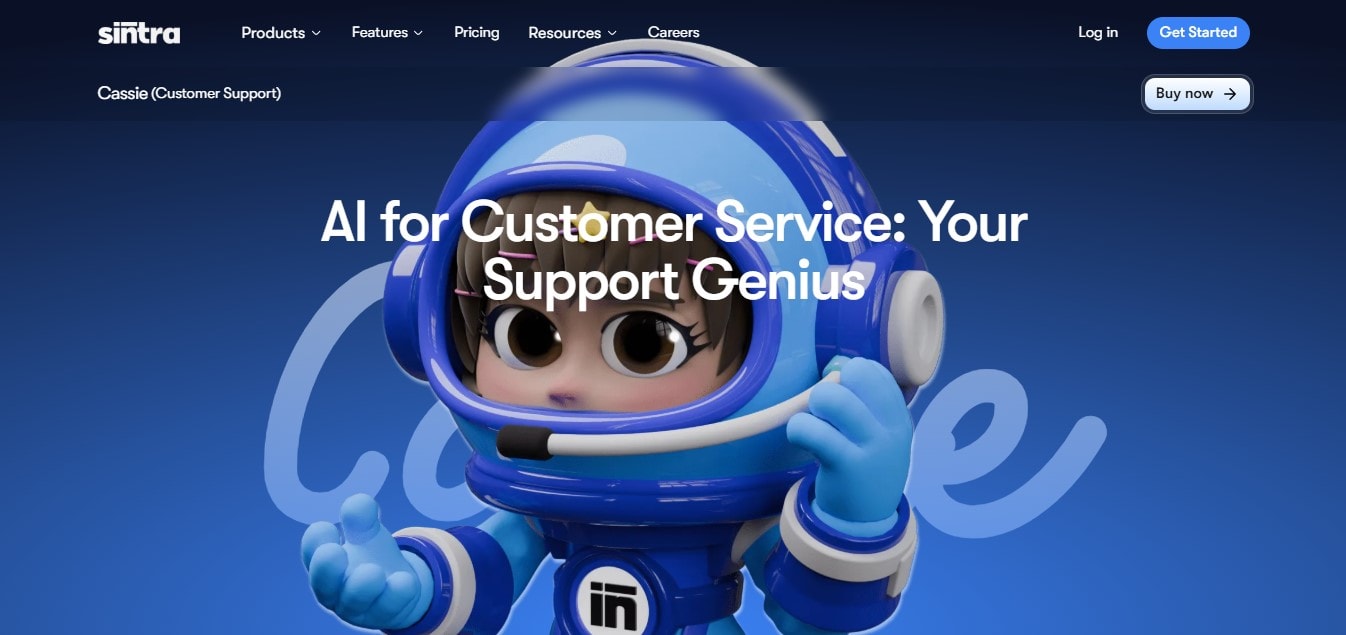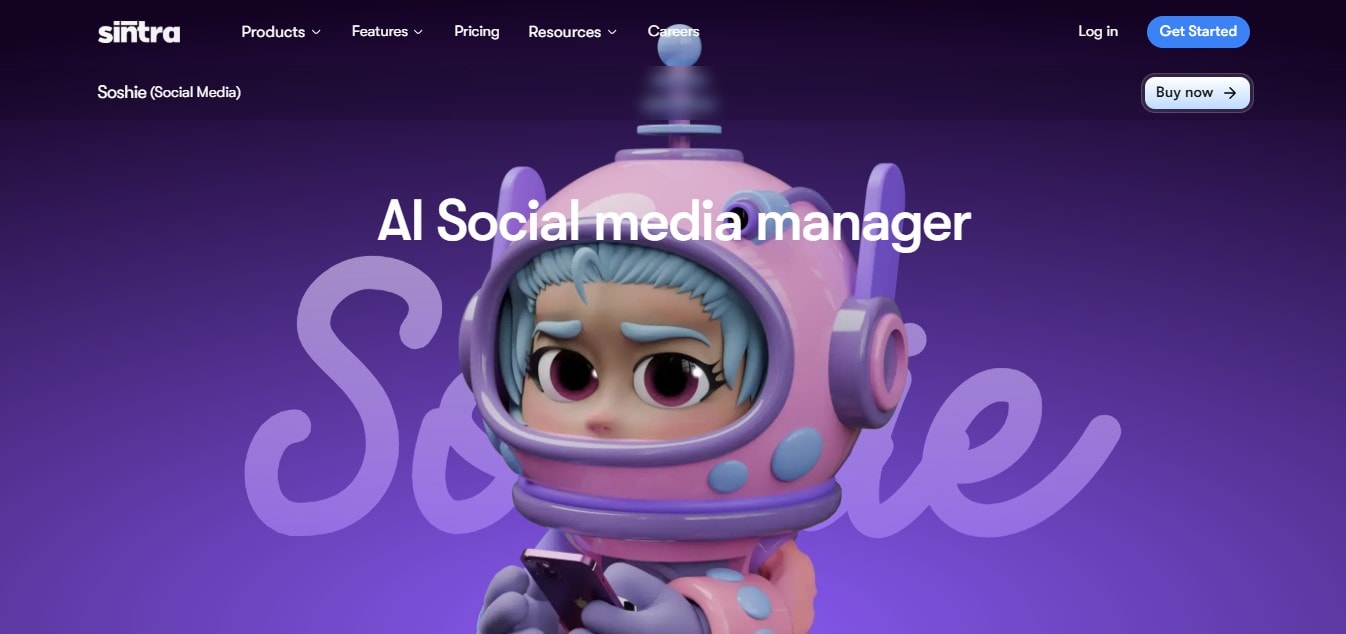Top 9 strategies to increase customer engagement

Skip ahead
Top 9 Strategies to Increase Customer Engagement

Marketers are constantly searching for ways to increase customer engagement—and for good reason. Higher engagement leads to stronger customer loyalty, and loyal customers tend to be more satisfied. That satisfaction translates directly into long-term business growth.
In fact, companies that rank highest in customer satisfaction grow nearly 2.5 times faster than their competitors. That’s a statistic no marketer can afford to overlook. Strong customer relationships fuel retention, loyalty, and revenue.
So if you’re not sure how to increase customer engagement within your own business, this guide will walk you through proven strategies to improve customer experiences, complete with actionable tips and powerful tools to help you succeed.
What Is a Customer Engagement Strategy?
Customer engagement is the process of building meaningful relationships between a business and its customers. This is achieved through personalized interactions across multiple touchpoints—your website, social media platforms, review platforms, email, and more.
A customer’s engagement level reflects how interested they are in your brand and offerings. It goes far beyond a single transaction, evolving into an experience that shapes customer loyalty and advocacy. Strong engagement can:
- Encourage repeat purchases
- Drive positive word-of-mouth
- Build a loyal customer base
- Generate positive feedback and reviews
In today’s highly competitive market, customer engagement plays a direct role in determining customer lifetime value and overall business success. However, achieving this level of connection requires a clear and cohesive customer engagement strategy.
A strong customer engagement plan helps attract the right attention to your brand while encouraging both existing and potential customers to interact with your business. That’s why an effective engagement strategy should focus on delivering personalized customer experiences before, during, and after a purchase or sign-up.
Finally, your customer engagement strategy should be measurable and responsive to customer needs. The ultimate goal is always to strengthen purchase intent and guide prospective buyers deeper into your sales funnel.
9 Proven Strategies to Increase Customer Engagement

Winning new customers has become increasingly challenging, especially with the endless shopping options available today. That’s why brands must focus on retaining existing customers, keeping them engaged through meaningful interactions, and fostering customer loyalty. But what once counted as “good customer service” is no longer enough. Today's customers expect far more from the brands they support.
Here are 9 proven strategies that can help businesses increase customer engagement and always stay top of mind.
1. Personalize Every Interaction
Why Personalization Matters?
Research shows that 66% of customers would leave a brand if their experience doesn't feel personal. In fact, 86% of customers say that personalized experiences increase their loyalty towards a brand, ultimately improving customer lifetime value. Hence, it only makes sense that personalization is at the top of this list.
Customers want to feel heard and valued. But generic messaging and irrelevant recommendations often make them feel like “just another number.”
How to Deliver Personalized Communication
- Integrate AI tools with your customer database to automatically tailor messages based on purchase history and preferences.
- Send personalized emails that reflect customer data, browsing history, and interests.
- Recommend products and services based on their browsing activity and previous interactions
- Set up instant acknowledgments for various customer actions, such as signing up for emails, submitting a contact form, placing an order, or messaging customer service.
- Address customers by name in emails and chats to establish deeper connections.
- Mention a clear CTA in responses so customers know what to do next.
- Utilize behavioral triggers, such as product views, abandoned carts, or inactivity, to send timely and relevant messages.
Tools like Sintra's copywriting assistant, Penn, can help automate these personal touches across all business channels. It's trained on large sets of data to know when and how to tailor communication for maximum impact.

2. Leverage AI Chatbots and Automated Support
Why Automated Customer Support Matters
A major pain point for customers is a lack of responsiveness. When customers reach out via email, chat, or website forms, slow or nonexistent replies can send a clear message: this brand doesn’t care. For many customers, that’s enough reason to switch to a competitor.
AI chatbots and automated support systems ensure that customers get instant responses, irrespective of time and human support availability. When a brand is responsive, customers feel valued and heard.
How to Leverage AI Chatbots and Automated Support
- Automate responses with chatbots so customers receive instant support for common questions such as order status, pricing, store hours, and FAQs.
- Offer 24/7 support by placing AI chatbots on your website, social media pages, and mobile app, ensuring customers get help whenever they need it.
- Integrate chatbots with your CRM so they can personalize communication based on customer history, preferences, and past interactions.
- Use chatbots on high-intent pages, like product pages and checkout, to answer last-minute questions and reduce abandoned carts.
- Use AI to categorize and prioritize support tickets, ensuring urgent cases are addressed first.
- Set up automated routing so chatbots can immediately transfer complex or sensitive issues to human agents for faster resolutions.
AI chatbots and automated support play a major role in enhancing customer satisfaction and engagement. Sintra’s AI customer service assistant, Cassie, can be a powerful addition to your support team. Cassie can handle thousands of interactions across multiple channels simultaneously, ensuring your audience always feels connected.

3. Create Loyalty & Rewards Programs
Why Rewards and Loyalty Programs Work
Customer loyalty programs are powerful because they reward customers for repeat purchases. They create a sense of appreciation and exclusivity, making customers far more likely to choose your brand over competitors.
When businesses use rewards and loyalty programs to re-engage existing customers, they naturally improve customer engagement and retention. Over time, this has a direct positive impact on long-term revenue.
How to Create Loyalty & Rewards Programs
- Make rewards attainable and desirable so customers are motivated to participate in your program.
- Communicate the program’s benefits clearly to avoid confusion and set the right customer expectations.
- Update your program regularly to maintain excitement and encourage ongoing participation.
- Leverage gamification by incorporating points, badges, milestones, or levels to incentivize repeat purchases and brand interaction.
- Offer exclusive early access or perks to loyal customers through emails, broadcast channels, or private social groups to make them feel valued and appreciated.
4. Actively Listen and Act on Feedback
Why Listening to Feedback Matters
A successful business understands its customers’ needs, pain points, and expectations. But none of this is possible without actively listening to customer feedback.
Gathering and responding to customer feedback helps businesses identify what they truly want, what frustrates them, and where improvements are needed. It also reveals valuable insights into product performance, customer experience gaps, and emerging trends. When you ask for valuable feedback and act on it, customers feel that their opinions matter. This sense of appreciation encourages them to stay engaged and builds long-term trust in your brand.
How to Listen and Act on Customer Feedback
- Use customer surveys after purchases, support interactions, or onboarding to collect feedback and identify areas to improve.
- Encourage customers to leave reviews for your products or services to better understand user sentiment and customer issues.
- Monitor reviews across platforms such as Google, Trustpilot, and social media to gain insights into real customer experiences.
- Include in-app or on-site feedback forms so customers can quickly report issues, rate features, or suggest improvements.
- Respond to feedback promptly so customers know they are heard and appreciated.
- Close the feedback loop by informing customer when their suggestions lead to actual changes in your products or services.
5. Build a Multi-Channel Engagement Strategy
Why Businesses Need a Multi-Channel Engagement Strategy
An average customer expects to interact with their favorite brands on the channels of their choice—whether it’s phone, email, social media, or live chat. Customers now anticipate an omnichannel engagement experience from businesses.
As a business, you shouldn't limit engagement to just one or two channels. Instead, meet your customers wherever they are, providing consistent, seamless experiences. By interacting across multiple channels, a brand increases its visibility and the likelihood of repeat interactions.
How to Build a Multi-Channel Engagement Strategy
- Identify the channels your target audience prefers and prioritize engagement there.
- Keep messaging consistent across all channels to maintain a unified brand experience.
- Use automation tools for constant interactions across social media, emails, chat support, and other communication channels.
- Leverage customer information to personalize interactions and ensure a smooth, connected customer journey.
- Combine online and offline experiences to create seamless transitions, such as promoting an in-store event via social media or email.
- Monitor customer engagement metrics to determine which channels perform best and use the insights to optimize future campaigns.
AI automation can make a multi-channel engagement strategy far more effective. For example, Sintra’s AI email assistant, Emmie, can automate and optimize your email campaigns so customers remain connected to your brand. From drip campaigns to regular updates and abandoned cart reminders, Emmie helps foster stronger engagement through a consistent and intelligent email strategy.

6. Use Conversational Marketing
Why Conversational Marketing Works
Marketing has evolved far beyond generic, one-size-fits-all messages. Modern consumers expect real, two-way conversations. They want brands to interact with them in their preferred time, language, and communication channel.
Conversational marketing helps brands identify customer pain points, understand their interests, and guide them toward the next step. At its core, this approach focuses on making the customer experience simpler, more human, and more seamless.
How to Use Conversational Marketing
- Send personalized emails with QR codes or CTAs that take customers directly to your website, social media pages, or messaging apps.
- Use SMS and MMS to engage contacts who prefer mobile communication outside of traditional social platforms.
- Leverage instant messaging apps like Facebook Messenger, Instagram DMs, and WhatsApp for fast, accessible customer support.
- Deploy conversational chatbots to answer FAQs and user queries in real time.
- Use live chat on your website to welcome visitors, answer questions, and guide them toward relevant content.
- Host live broadcasts on YouTube, Facebook, Instagram, or TikTok so customers can interact with your brand in real time.
7. Share Valuable & Interactive Content
Why Sharing Interactive Content Works
Customers don’t always want to see the selling side of a brand. True customer engagement requires more than promotions. It demands consistent, meaningful interactions across multiple touchpoints. One of the most effective ways to do this is by sharing relevant content that solves problems, answers questions, or inspires.
Valuable content positions your brand as a trusted resource rather than just another business pushing sales. Interactive content takes this even further by encouraging customers to actively participate instead of passively scrolling. This boosts customer retention, increases time spent with your brand, and strengthens long-term customer relationships.
How to Share Valuable & Interactive Content
- Post educational content such as blogs, tutorials, and how-to guides that solve customer pain points.
- Use interactive engagement elements like quizzes, polls, and surveys to encourage customer engagement on your social media and website.
- Leverage infographics and carousels to simplify complex information and make the content more shareable.
- Create short videos like reels, Shorts, TikToks, to grab customers' attention quickly.
- Share customer success stories to build trust with new customers and reinforce loyalty in existing customers.
- Offer downloadable resources like ebooks, templates, checklists, or cheat sheets to provide added value.
8. Enhance Social Media Engagement
Social media is one of the most powerful channels for building real-time, two-way connections with your target audience. It’s where customers feel comfortable asking questions, sharing opinions, and discovering new brands.
When a brand actively engages with its audience on social platforms, it creates more than just potential leads. It builds a community that’s excited to participate in conversations. Strong social media engagement increases visibility, boosts trust, and turns passive followers into active brand advocates.
How to Enhance Social Media Engagement
- Host Q&A sessions through Stories, live streams, or comment threads to answer questions and build trust.
- Encourage user-generated content (UGC) by inviting customers to share photos, videos, or testimonials featuring your products.
- Run giveaways and contests to spark participation and reward your most engaged followers.
- Create trend-driven content like reels, memes, and video challenges to stay relevant and increase shareability.
- Collaborate with influencers to expand your reach and strengthen your brand’s credibility.
Managing social media can take up valuable time for sales teams, but an AI social media manager like Soshie makes it easier. Soshie automates posting, responses, and content ideas while still keeping interactions personal. It works like a reliable team member who works with you towards successful customer engagement.

9. Host Virtual Events & Webinars
Why Virtual Events Matter
Virtual events take customer engagement to a whole new level by giving the audience a chance to connect with their favorite brands in real-time.
Unlike static content, live sessions give customers the opportunity to ask questions, learn directly from your team, and build a deeper connection with your brand. This nurtures trust, strengthens relationships, and positions your business as an authority in your field.
How to Host Virtual Events & Webinars
- Run live webinars or workshops to educate potential customers on product usage and best practices.
- Host AMAs (Ask Me Anything), giving your customers an open space for digital in-person interactions.
- Invite industry experts for webinars to broaden your audience and add credibility to your brand.
- Share event recordings afterwards so customers who missed the live interaction can still benefit.
How to Build a Customer Engagement Strategy in 5 Steps?
An effective customer engagement strategy is a structured marketing plan. It is designed to create exceptional customer experiences that encourage repeat business. A strong strategy focuses on four key objectives:
- Improving customer satisfaction
- Building brand loyalty
- Increasing customer lifetime value
- Boosting brand advocacy
These goals can be achieved by following a clear framework consisting of five essential steps, which provide a roadmap for engaging customers and improving their entire customer journey.
Step 1: Understand your Audience Through Data and Segmentation
Customer engagement would feel like just a buzzword unless a business truly understands who its audience is.
Therefore, the first step in building a successful customer engagement strategy is collecting and analyzing data from multiple sources, such as website activity, customer behavior, email interactions, and social media engagement. This information helps you understand what customers want, how they behave, and what motivates their decisions.
Segmentation takes this insight further by grouping customers based on demographics, interests, behaviors, or lifecycle stages. It allows you to understand each segment more deeply, identify their needs, and tailor your messaging and interactions accordingly.
Step 2: Personalize Every Interaction Using Insights and AI
Personalization is no longer optional; it’s something customers expect from brands in today’s competitive landscape. Once you understand your audience and their needs, the next step is to connect with them through tailored, meaningful interactions.
But delivering personalized experiences at scale isn’t easy, especially with a small sales team or a large customer base. This is where AI-powered insights and automation make a real difference. AI can help personalize emails, recommend products, customize chatbot responses, and deliver targeted messages across social media. This ensures that every touchpoint feels relevant, timely, and customer-focused.
Step 3: Engage Customers Across Multiple Touchpoints
Modern customers interact with brands across a variety of channels, from social media and email to websites, messaging apps, and in-person experiences. That’s why businesses need to understand where their audience is most active and prioritize engagement on those platforms. However, focusing only on one or two channels isn’t enough.
Instead, brands should adopt a multi-touchpoint engagement approach supported by automation to ensure they meet customers wherever they are. This not only keeps messaging consistent but also enables coordinated campaigns across channels, creating a seamless and unified customer experience.
Step 4: Create a Customer-Centric Company Culture
Customer service and engagement shouldn’t be viewed as responsibilities limited to sales or marketing teams. A truly effective customer engagement strategy requires a company-wide commitment to putting the customer first.
Employees across all departments should prioritize customers' needs, actively listen, and deliver satisfactory service. When everyone shares a customer-centric approach, every interaction, from support calls to product development, is geared towards customer engagement and building lasting loyalty.
Step 5: Measure Performance, Analyze Insights, and Optimize Continuously
A customer engagement strategy shouldn't be static. Businesses should continuously measure performance against key metrics like engagement rates, satisfaction scores, repeat purchases, and customer lifetime value.
These insights should then be analyzed to understand which parts of the strategy are working and which need improvement. Continuously optimize paid advertising, social media content, and customer interactions to ensure your engagement approach evolves with customer expectations and market trends.
Key Trends Shaping Customer Engagement in 2025

Besides having more options to choose from, modern customers are more informed than ever. As their expectations grow, user engagement strategies also need to evolve if a brand wants to maintain an emotional connection with its audience.
Let's look at key trends that are shaping how brands will improve their marketing strategy in 2025.
AI-Driven Hyper-Personalization
Personalization has become a crucial element in building customer connections. However, businesses will have to amplify their personalization strategies with AI tools to deliver custom content that feels unique and relevant to each customer
Predictive Analytics for Churn Prevention
AI-powered predictive Analytics use data to identify customers who are at risk of leaving your brand. By analyzing patterns like reduced activity, low engagement, or negative feedback, it alerts businesses early so they can take action to prevent customer churn. A brand can then send personalized offers or offer improved support to retain customers and reduce churn.
No-Code Automation
No-code automation tools allow businesses to automate customer engagement tasks and workflows without needing technical expertise. These tools enable non-technical teams to deliver timely, personalized, and consistent interactions at scale.
Omnichannel Engagement
Customers want seamless experiences across multiple channels. They might start with the mobile app, continue on a desktop site, and make a purchase through WhatsApp direct messaging. Therefore, businesses must prioritize an omnichannel engagement strategy to keep customers engaged at multiple touchpoints.
Integrating Customer Data Platforms (CDPs)
By integrating CDPs, businesses can centralize all customer information, like purchase history, website behavior, email interactions, and social media activity, into a single platform. This unified view helps brands tailor interactions, anticipate customer needs, and deliver relevant experiences across all communication channels.
Conclusion
A strong customer engagement plan is essential if businesses want their customers to remain loyal. By engaging customers with personalized interactions at all touchpoints, businesses can improve retention and ultimately drive conversions.
In today’s competitive market, an effective engagement strategy can make the difference between thriving and merely surviving. And you don’t have to do it alone. AI-powered, all-in-one solutions like Sintra help businesses scale personalized interactions across every channel, making it easier to engage customers consistently and build lasting relationships.
Frequently Asked Questions (FAQs)
Why Increasing Customer Engagement Matters?
Customer engagement plays a direct role in determining customer lifetime value and overall business success. Increased customer engagement can:
- Encourage repeat purchases
- Drive positive word-of-mouth
- Build a loyal customer base
- Generate positive feedback and reviews
How do I measure customer engagement effectively?
Customer engagement can be measured using the following metrics:
- Repeat purchases and subscription renewals
- Interaction rates on emails, social media, and websites
- Feedback, reviews, and referrals
- Customer satisfaction and Net Promoter Scores (NPS)
- Time spent on your website or content
How does AI improve customer engagement?
AI enhances customer engagement by enabling personalized, timely, and scalable interactions. With AI tools, businesses can segment their audience according to behaviors and demographics and then target them with tailored messaging, like emails and product recommendations. AI also manages chat support and provides insights into preferences for improved customer engagement.

















